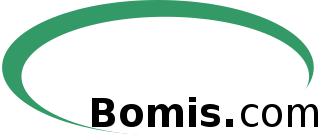Related Research Articles

AOL is an American web portal and online service provider based in New York City. It is a brand marketed by the current incarnation of Yahoo Inc.
An Internet filter is software that restricts or controls the content an Internet user is capable to access, especially when utilized to restrict material delivered over the Internet via the Web, Email, or other means. Content-control software determines what content will be available or be blocked.

The Internet is the global system of interconnected computer networks that uses the Internet protocol suite (TCP/IP) to communicate between networks and devices. It is a network of networks that consists of private, public, academic, business, and government networks of local to global scope, linked by a broad array of electronic, wireless, and optical networking technologies. The Internet carries a vast range of information resources and services, such as the inter-linked hypertext documents and applications of the World Wide Web (WWW), electronic mail, telephony, and file sharing.

Lycos, Inc., is a web search engine and web portal established in 1994, spun out of Carnegie Mellon University. Lycos also encompasses a network of email, web hosting, social networking, and entertainment websites. The company is based in Waltham, Massachusetts, and is a subsidiary of Kakao.
Shareware is a type of proprietary software that is initially shared by the owner for trial use at little or no cost. Often the software has limited functionality or incomplete documentation until the user sends payment to the software developer. Shareware is often offered as a download from a website or on a compact disc included with a magazine. Shareware differs from freeware, which is fully-featured software distributed at no cost to the user but without source code being made available; and free and open-source software, in which the source code is freely available for anyone to inspect and alter.
CompuServe was an American online service provider, the first major commercial one in the world – described in 1994 as "the oldest of the Big Three information services ."
An online service provider (OSP) can, for example, be an Internet service provider, an email provider, a news provider (press), an entertainment provider, a search engine, an e-commerce site, an online banking site, a health site, an official government site, social media, a wiki, or a Usenet newsgroup.

Prodigy Communications Corporation was an online service from 1984 to 2001 that offered its subscribers access to a broad range of networked services, including news, weather, shopping, bulletin boards, games, polls, expert columns, banking, stocks, travel, and a variety of other features.

ZDNET is a business technology news website owned and operated by Red Ventures. The brand was founded on April 1, 1991, as a general interest technology portal from Ziff Davis and evolved into an enterprise IT-focused online publication.
Yahoo! GeoCities was a web hosting service that allowed users to create and publish websites for free and to browse user-created websites by their theme or interest. GeoCities was started in November 1994 by David Bohnett and John Rezner, and was named Beverly Hills Internet briefly before being renamed GeoCities. On January 28, 1999, it was acquired by Yahoo!, at which time it was supposedly the third-most visited website on the World Wide Web.
Nando was an American internet news service and Internet service provider (ISP), founded in 1993 by the publishers of The News & Observer newspaper in Raleigh, North Carolina. Initially it relied on access via bulletin board technology. One of the first 24-hour news websites, the Nando Times, was launched in 1994, providing edited information from major news agencies that had not then developed their own websites.

iVillage, Inc. was a mass media company that operated the ”most popular female-oriented sites” on the internet in the 1990s. In addition to ivillage.com, the company operated iVillage UK, Astrology.com, GardenWeb, and the NBC Digital Health Network. The iVillage website ceased operations on October 31, 2014, and the domain name was redirected to the Today Show website, while the other domain names were sold.

Bomis was a dot-com company best known for supporting the creations of free-content online-encyclopedia projects Nupedia and Wikipedia. It was co-founded in 1996 by Jimmy Wales, Tim Shell, and Michael Davis. By 2007, the company was inactive, with its Wikipedia-related resources transferred to the Wikimedia Foundation.

Yahoo! Kids is a public web portal provided by Yahoo! Japan to find age appropriate online content for children between the ages of 4 and 12. This site was formerly available in English via Yahoo!, where it was known as Yahooligans! until December 2006, and in Korean via Yahoo! Korea.
Shockwave.com, or Shockwave, is an online and offline video games distributor and game portal. It is owned by Addicting Games, Inc., based in Los Angeles, California, United States. It was launched by Macromedia on August 2, 1999, to promote the company's Shockwave and Flash players, both used on the website. As of 2005, the website had 22 million users. By 2010, it hosted more than 400 games in a variety of genres.
AOL Hometown was a web hosting service offered by AOL. It offered 12 megabytes of server space for AOL subscribers to publish their own websites, and included a 10-step form-driven page creator called 1-2-3 Publish and a WYSIWYG online website builder called Easy Designer, neither of which required knowledge of HTML. In 2001, AOL Hometown estimatedly had 11 million websites and a new website was added to it every eight seconds. By 2002, AOL Hometown had grown to 14 million websites. It was shut down on 31 October 2008.
Viral phenomena are objects or patterns that are able to replicate themselves or convert other objects into copies of themselves when these objects are exposed to them. Analogous to the way in which viruses propagate, the term viral pertains to a video, image, or written content spreading to numerous online users within a short time period. This concept has become a common way to describe how thoughts, information, and trends move into and through a human population.
An online video platform (OVP), provided by a video hosting service, enables users to upload, convert, store and play back video content on the Internet, often via a structured, large-scale system that may generate revenue. Users generally will upload video content via the hosting service's website, mobile or desktop application, or other interfaces (API). An example of an OVP is YouTube. The type of video content uploaded might be anything from shorts to full-length TV shows and movies. The video host stores the video on its server and offers users the ability to enable different types of embed codes or links that allow others to view the video content. The website, mainly used as the video hosting website, is usually called the video-sharing website.

MSN Dial-up is an Internet service provider operated by Microsoft in the United States and formerly also in several other countries. Originally named The Microsoft Network, it debuted as a proprietary online service on August 24, 1995, to coincide with the release of Windows 95. In 1996 and 1997, a revised web-based version of the ISP was an early experiment at interactive multimedia content on the Internet.
References
- 1 2 3 4 5 6 Valauskas, Edward J. (July 1, 1995). "Women's Wire: Hassle-Free Online Information and Internet Access". Online.
- 1 2 Maddox, Kate (June 1998). "Ellen Pack" . Advertising Age. 69 (22): 22 – via EBSCOhost.
- 1 2 Koenenn, Connie (February 24, 1994). "Chatting the High-Teach Way, on the Women's Wire". The Los Angeles Times. Retrieved October 11, 2018– via Newspapers.com.
- 1 2 Guglielmo, Connie (May 17, 1999). "Ellen Pack" . Inter@ctive Week. 6 (20): 8 – via EBSCOhost.
- 1 2 Losee, Stephanie (July 11, 1994). "Women's Wire" . Fortune. 130 (1): 118–119 – via EBSCOhost.
- ↑ "'WIRE' Opens Doors Online". Information Today.
- 1 2 3 4 Schmit, Julie (January 14, 1996). "Women's Magazine Turns Pages on World Wide Web". Newspapers.com. Retrieved October 11, 2018.
- 1 2 3 4 5 Ness, Carol (December 12, 1994). "Women Get 'Own Room' On Superhighway". The Kokomo Tribune. Retrieved October 11, 2018– via Newspapers.com.
- 1 2 Weise, Elizabeth (October 24, 1993). "WIRE'd Women". The Montgomery Advertiser. Retrieved October 9, 2018– via Newspapers.com.
- ↑ "Wired Women of the Internet". The Paducah Sun. October 16, 1996. Retrieved October 11, 2018– via Newspapers.com.
- 1 2 3 Evans 2018, p. 206.
- 1 2 3 4 "Computer Address Case Settled". The Indianapolis News. February 21, 1994. Retrieved October 11, 2018– via Newspapers.com.
- ↑ McDaniel, Marleen (December 3, 1997). "A Safe Place Not to Browse" . Forbes ASAP. 160: 26–28 – via EBSCOhost.
- 1 2 3 Evans 2018, p. 207.
- 1 2 3 4 "Women's Wire Gets Serious About Business". The Tampa Tribune. August 19, 1996. Retrieved October 11, 2018– via Newspapers.com.
- 1 2 Plotnikoff, David (October 29, 1995). "An On-Line Pioneer for Women Pulls the Plug". The Central New Jersey Home News. Retrieved October 11, 2018– via Newspapers.com.
- ↑ Evans 2018, p. 213.
- 1 2 Leigh, Suzanne (January 14, 2007). "ReinventYourself.com / Where'd the dotshots of the '90s land?". SFGate. Retrieved October 9, 2018.
- ↑ Piller, Charles (May 30, 2000). "Sites Struggle as They Connect Women to Web". The Los Angeles Times. p. A1. Retrieved October 11, 2018– via Newspapers.com. and "Women: Sites in Search of Financial Success". The Los Angeles Times. May 30, 2000. p. A7. Retrieved October 11, 2018– via Newspapers.com.
- ↑ McUsic, Teresa (June 9, 1997). "Directory a Guide to E-mail for the Female". The Akron Beacon Journal. Retrieved October 9, 2018– via Newspapers.com.
- 1 2 3 Seo, Diane (July 23, 1999). "Rivals Battle to Be New Online Force". The Los Angeles Times. Retrieved October 11, 2018– via Newspapers.com. and "Internet: Web Firms IVillage, Women.com Have Their Sites Set on Gender Networking". The Los Angeles Times. July 23, 1999. p. C8. Retrieved October 11, 2018– via Newspapers.com.
- ↑ "Media Insight Women.com Networks". PR News. February 15, 1999.
- 1 2 "iVillage Buys Rival Women.com". The Online Reporter. February 12, 2001.
- ↑ Hart, Marion (May 3, 1996). "Women's Wire". EW.com. Retrieved October 11, 2018.
- ↑ Pawlak, Jim (September 15, 1997). "Web Sites Give Advice About Career Issues". Detroit Free Press. Retrieved October 11, 2018– via Newspapers.com.
- ↑ Simmers, Tim (February 10, 1997). "Female Point of View Online". Arizona Republic. Retrieved October 11, 2018– via Newspapers.com.
- ↑ "Wired Women News". Arizona Republic. July 15, 1996. Retrieved October 11, 2018– via Newspapers.com.
- 1 2 "Women Work the Web". The Ottawa Citizen. August 6, 1999. Retrieved October 11, 2018– via Newspapers.com. and "Web: Emphasis on Friendship and Family". The Ottawa Citizen. August 6, 1999. p. C9. Retrieved October 11, 2018– via Newspapers.com.
- 1 2 Lorek, L.A. (February 20, 2000). "Sites Targeting Women and Their Interests". South Florida Sun Sentinel. Retrieved October 11, 2018– via Newspapers.com.
- ↑ Bennett, Johanna (January 11, 1998). "Internet Wakes Up To Women". The San Francisco Examiner. Retrieved October 11, 2018– via Newspapers.com.
- ↑ Evans 2018, p. 208.
- ↑ Evans 2018, p. 209-210.
- ↑ Evans 2018, p. 212.
Sources
- Evans, Claire L. (2018). Broad Band: The Untold Story of the Women Who Made the Internet. New York: Portfolio/Penguin. ISBN 9780735211759.